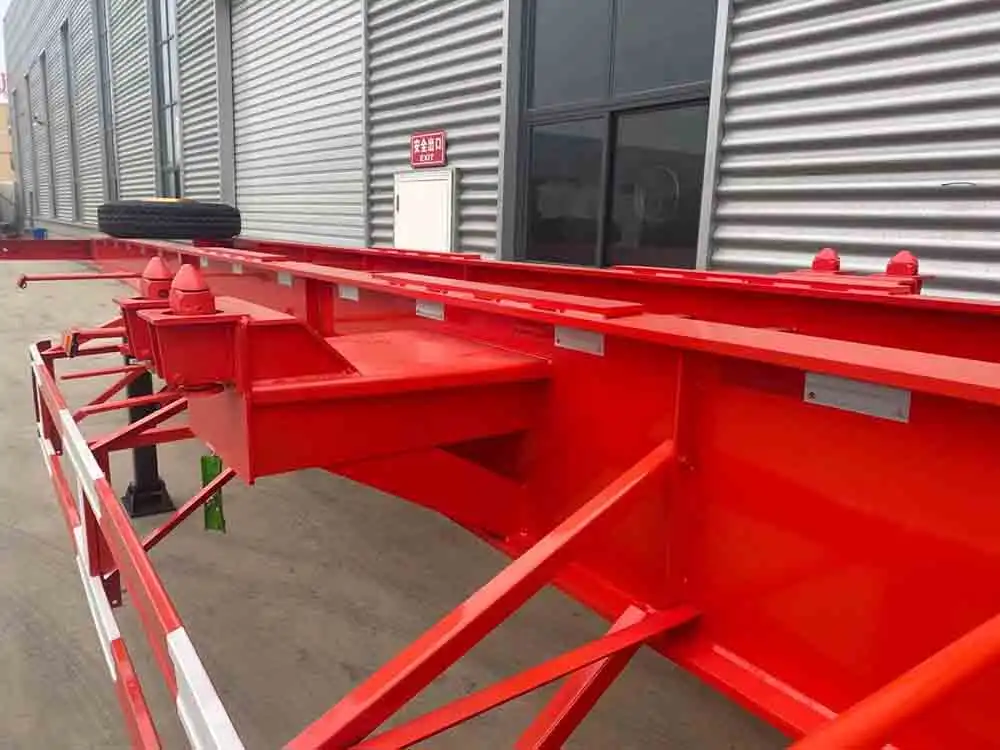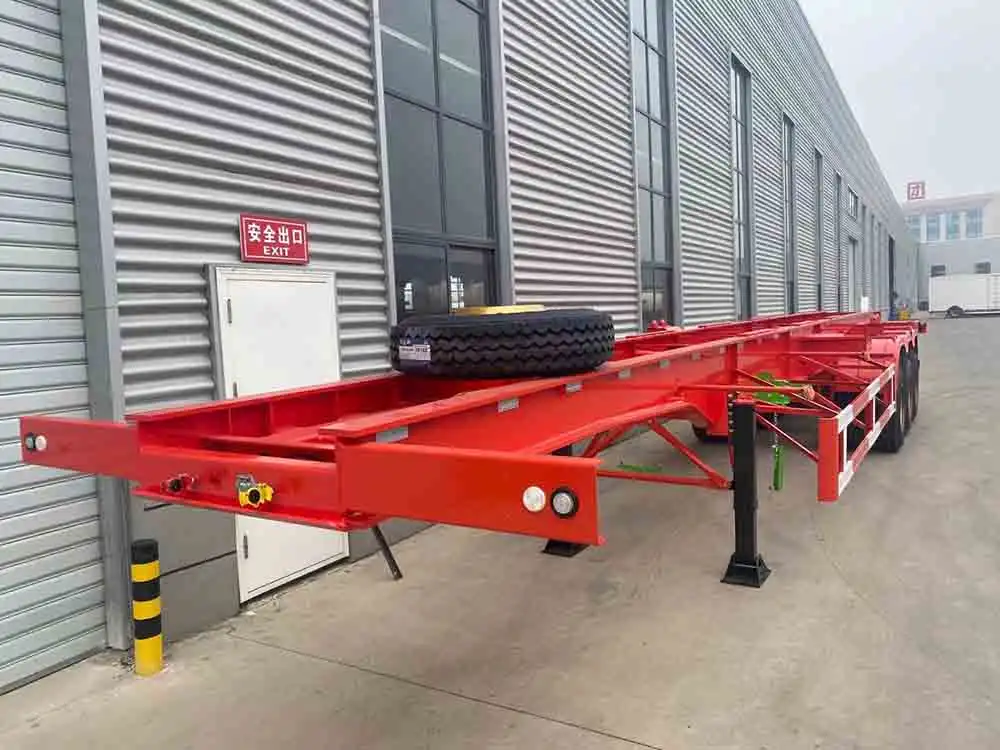A skeletal container refers to a specific type of container chassis designed to transport shipping containers. Unlike a standard trailer chassis, which typically has a solid frame, a skeletal container chassis features an open framework. This open structure is designed to accommodate the bottom corners of shipping containers, allowing them to be securely mounted and transported.
Key features of a skeletal container chassis include:
Twist Locks: Skeletal container chassis are equipped with twist locks or other securing mechanisms. These locks engage with the corner castings on the bottom of the shipping container, locking it in place on the chassis during transportation.
Open Frame Design: The chassis has an open and minimalistic frame design to allow easy positioning and attachment of shipping containers. This design also makes it more versatile, as it can accommodate containers of various sizes.
Tandem or Tridem Axles: To support the weight of the shipping container, skeletal container chassis often have tandem or tridem axles. These axles distribute the load and provide stability during transit.
Adjustable Rear End: Some skeletal chassis have an adjustable rear end that can be extended or retracted to accommodate containers of different lengths.
Kingpin and Landing Gear: Similar to other trailer chassis, a skeletal container chassis has a kingpin at the front that connects to the fifth wheel of the towing vehicle. It also has landing gear to support the chassis when it is not attached to a truck.
Skeletal container chassis are commonly used in intermodal transportation, allowing for the efficient movement of shipping containers between ships, trains, and trucks. Their design facilitates quick loading and unloading of containers at ports and distribution centers.


Key points about skeletal container
A trailer chassis refers to the structural framework that supports the various components of a trailer. Trailers are non-motorized vehicles that are towed by a powered vehicle, such as a car or a truck. The chassis serves as the foundation for the trailer and provides support for the load it carries. Here are some key points about trailer chassis:
- Construction and Materials:
Frame Structure: The chassis is typically constructed using steel or aluminum to provide strength and durability.
Cross Members: These are horizontal beams that connect the longitudinal rails of the chassis, adding stability and support.
- Types of Trailers:
Flatbed Trailers: These have a simple, flat chassis design and are suitable for carrying large and heavy loads.
Enclosed Trailers: These have a chassis with an enclosed body, suitable for protecting cargo from the elements.
Utility Trailers: Designed for various purposes, they can have open or closed chassis configurations.
- Suspension System:
The chassis includes a suspension system to absorb shocks and vibrations, providing a smoother ride for both the trailer and its cargo.
- Axles and Wheels:
The chassis typically supports one or more axles with wheels. The number of axles depends on the size and weight capacity of the trailer. Axles may have different configurations, such as single, tandem, or multiple axles.
Understanding the specific requirements of the trailer and its intended use is crucial when selecting or designing a skeletal container. It must be capable of safely carrying the intended load while adhering to relevant regulations and safety standards.

